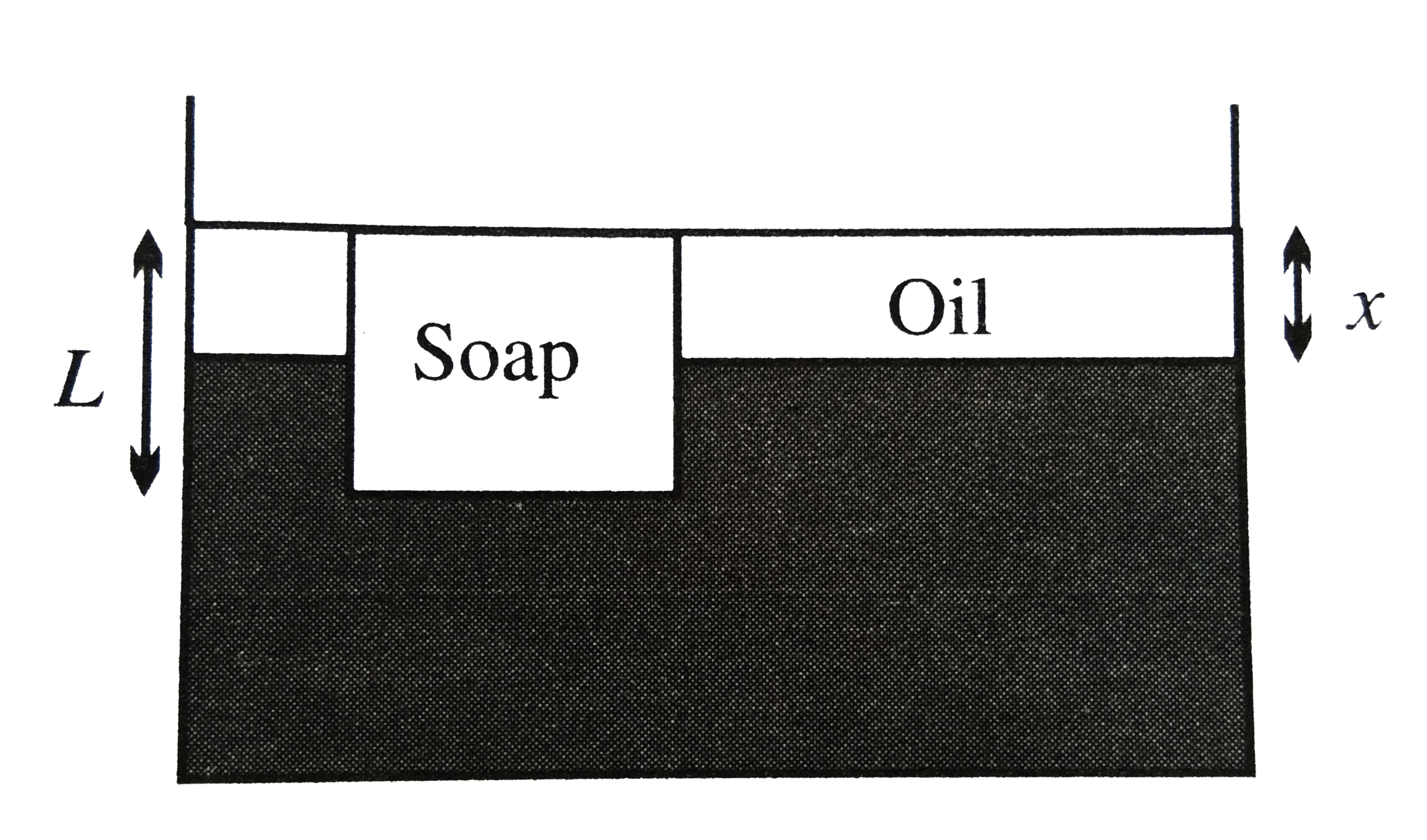Oil-soluble dye is mixed with water-in-oil emulsion, then
Dispersion medium is coloured
Dispersed phase is coloured
Both coloured
None is coloured
The correct Answer is:A
To solve the question regarding the effect of mixing an oil-soluble dye with a water-in-oil emulsion, we can follow these steps:
Step 1: Understand the Composition of the Emulsion
- An emulsion consists of two immiscible liquids where one liquid is dispersed in the other. In this case, we have a water-in-oil emulsion.
- In a water-in-oil emulsion, the dispersed phase is water, and the dispersion medium is oil.
Hint: Remember that in a water-in-oil emulsion, oil is the continuous phase while water is the dispersed phase.
Step 2: Identify the Role of the Oil-Soluble Dye
- The oil-soluble dye is designed to dissolve in oil, which is the dispersion medium in this case.
- When the dye is added to the emulsion, it will dissolve in the oil phase.
Hint: Consider how solubility affects the distribution of color in the emulsion.
Step 3: Determine the Effect on the Emulsion
- Since the oil-soluble dye dissolves in the oil, it will color the dispersion medium (the oil).
- The dispersed phase (water) will not be colored because the dye does not dissolve in water.
Hint: Think about what happens to the color when a dye is added to a specific phase of an emulsion.
Step 4: Analyze the Options Given
- Option 1: Dispersion medium is colored - This is true because the oil (dispersion medium) will be colored by the dye.
- Option 2: Dispersed phase is colored - This is false because the water (dispersed phase) will remain uncolored.
- Option 3: Both colored - This is false as only the dispersion medium is colored.
- Option 4: None is colored - This is false as the dispersion medium is colored.
Conclusion
The correct answer is that the dispersion medium is colored.
Final Answer: The dispersion medium is colored (Option 1).
- An emulsion consists of two immiscible liquids where one liquid is dispersed in the other. In this case, we have a water-in-oil emulsion.
- In a water-in-oil emulsion, the dispersed phase is water, and the dispersion medium is oil.
- The oil-soluble dye is designed to dissolve in oil, which is the dispersion medium in this case.
- When the dye is added to the emulsion, it will dissolve in the oil phase.
- Since the oil-soluble dye dissolves in the oil, it will color the dispersion medium (the oil).
- The dispersed phase (water) will not be colored because the dye does not dissolve in water.
- Option 1: Dispersion medium is colored - This is true because the oil (dispersion medium) will be colored by the dye.
- Option 2: Dispersed phase is colored - This is false because the water (dispersed phase) will remain uncolored.
- Option 3: Both colored - This is false as only the dispersion medium is colored.
- Option 4: None is colored - This is false as the dispersion medium is colored.
The correct answer is that the dispersion medium is colored.
Topper's Solved these Questions
- SURFACE CHEMISTRYBOOK - CENGAGE CHEMISTRY ENGLISHCHAPTER - SURFACE CHEMISTRYEXERCISE - Single Correct Answer Type
2 Videos
- SURFACE CHEMISTRYBOOK - CENGAGE CHEMISTRY ENGLISHCHAPTER - SURFACE CHEMISTRYEXERCISE - Exercises Assertion-Reasoning
17 Videos
- SURFACE CHEMISTRYBOOK - CENGAGE CHEMISTRY ENGLISHCHAPTER - SURFACE CHEMISTRYEXERCISE - Exercises Multiple Correct
25 Videos
- SOLUTIONSBOOK - CENGAGE CHEMISTRY ENGLISHCHAPTER - SOLUTIONSEXERCISE - Ex 2.3 (Objective)
9 Videos
- SYNTHETIC AND NATURAL POLYMERSBOOK - CENGAGE CHEMISTRY ENGLISHCHAPTER - SYNTHETIC AND NATURAL POLYMERSEXERCISE - Exercises Assertion Reasoning
10 Videos
Similar Questions
An oil-soluble dye is mixed with emulsion and the emulsion remains colourless. Then, it is
View SolutionEmulsions are normally prepared by shaking the two components together vigorously although some kind of emulsifiying agent usually has to added to stabilize the product. This emulsifying agent amy be a soap or other sufactant (surface active) sepcies or a lyophilic sol that forms a protective film around the dispersed phase.
Emulsion broadly classified into two types:
(i) Oil in water emulsions (O/W): Oil acts as dispersed phase and water acts as dispersion medium.
(ii). Water in oil emulsion (W/O): Water acts as dispersed phase and oil acts as dispersion medium Due test, dilution test may be emplyoyed for identification of emulsions.
Q. Read two statment s:
(1) milk is an example of oil in water (O/w) type emulsion
(2) cold cream is an example of water in oil (W/O) type emulsion
View SolutionOil seed is
View SolutionIf machine is lubricated with oil
View SolutionA U-tube is partially filled with water. Oil which does not mix with water is next poured into one side, until water rises by 25 cm on the other side. If the density of oil 0.8g/cm3. The oil level will stand higher than the water by
View SolutionGive one example each of 'oil water' and 'water oil' emulsion.
View SolutionA rectangular bar of soap has density 800kg/m3 floats in water density 1000kg/m3. Oil of density 300kg/m3 is slowly added, forming a layer that does not mix with water. When the top surface of thhe oil is the some level as the top surface of the soap. What is the ratio of the oil layer thickness to the soap's thickness. x/L?

View Solutionwhich of the following statement is not true about the oil - in - water type emulsion ?
View SolutionGive one test to distinguish whether the given emulsion is oil-in-water-type emulsion.
View SolutionEmulsions are also called the colloidal solutions in which the disperse phase as well as dispersion medium are liquids. It may be oil-in-water or water-inoil type Emulsifiers can be sued to stabilize the emulsion. Soaps, detergents, proteins, and gums are used as emulsifiers.
Which of the following examples is/are oil-in-water-type emulsion?
View Solution
